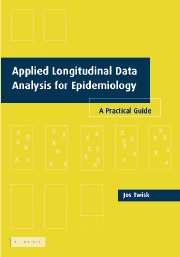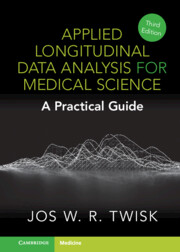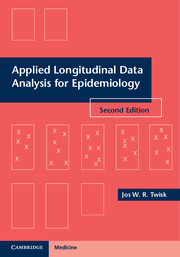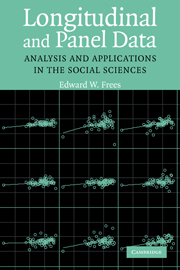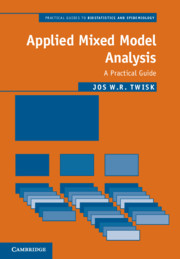Applied Longitudinal Data Analysis for Epidemiology
In this book the most important techniques available for longitudinal data analysis are discussed. This discussion includes simple techniques such as the paired t-test and summary statistics, but also more sophisticated techniques such as generalised estimating equations and random coefficient analysis. A distinction is made between longitudinal analysis with continuous, dichotomous, and categorical outcome variables. It should be stressed that the emphasis of the discussion lies on the interpretation of the different techniques and on the comparison of the results of different techniques. Furthermore, special chapters will deal with the analysis of two measurements, experimental studies and the problem of missing data in longitudinal studies. Finally, an extensive overview of (and a comparison between) different software packages is provided. It is important to realise that this book is a practical guide and especially suitable for non-statisticians.
- Clearly understandable by non-statisticians
- Compares and contrasts different techniques and methods of analysis
- Illustrated with examples of real-life research questions
Reviews & endorsements
'Overall, the book is well written, and the material is rich and carefully organised … the book is a welcome reference manual or practical guide for practitioners of statistical methods in (but not limited to) epidemiological and clinical studies. The book's main value is in its rather comprehensive presentation of a collection of longitudinal data analyses arising from different research questions. In this sense, the book is unique. Some practitioners of statistics may have struggled to learn longitudinal data analysis by reading manuals of software packages. this book is potentially of great benefit to them.' Journal of the American Statistical Association
Product details
December 2004Adobe eBook Reader
9780511055270
0 pages
0kg
54 b/w illus. 159 tables
This ISBN is for an eBook version which is distributed on our behalf by a third party.
Table of Contents
- 1. Introduction
- 2. Study design
- 3. Continuous outcome variables
- 4. Continuous outcome variables - relationships with other variables
- 5. Other possibilities to model longitudinal data
- 6. Dichotomous outcome variables
- 7. Categorical and 'count' outcome variables
- 8. Longitudinal studies with two measurements: the definition and analysis of change
- 9. Analysis of experimental studies
- 10. Missing data in longitudinal studies
- 11. Tracking
- 12. Software for longitudinal data-analysis
- 13. Sample size calculations
- Index.

